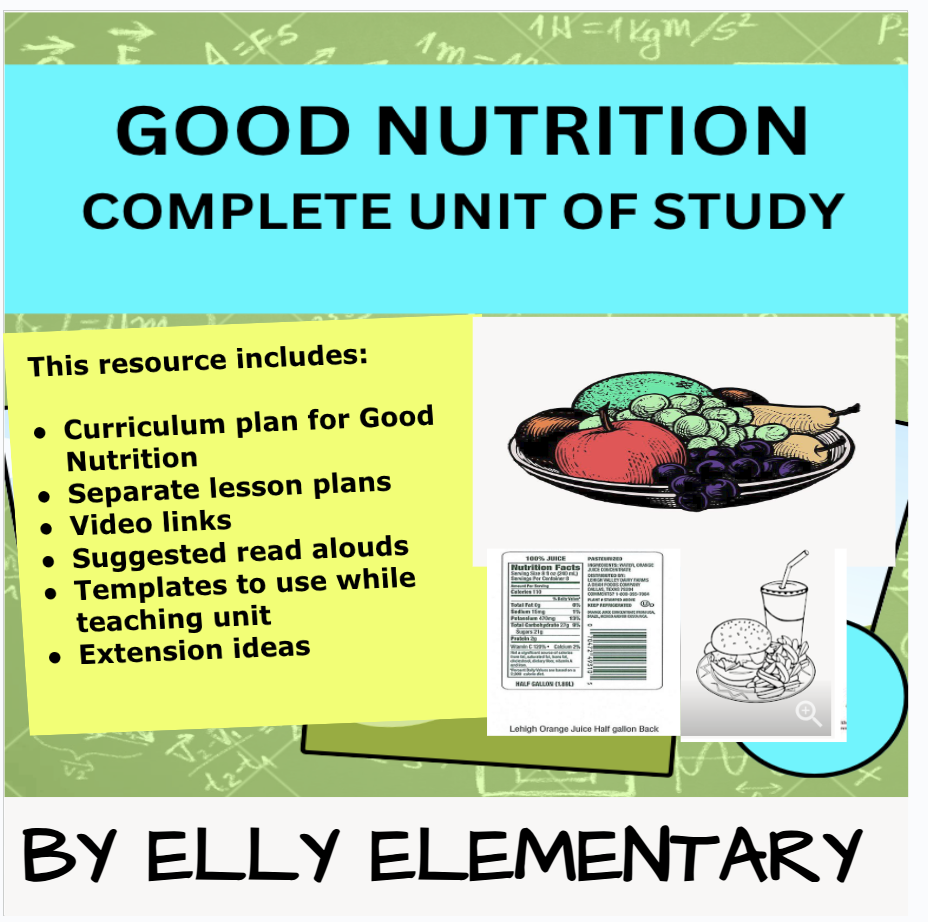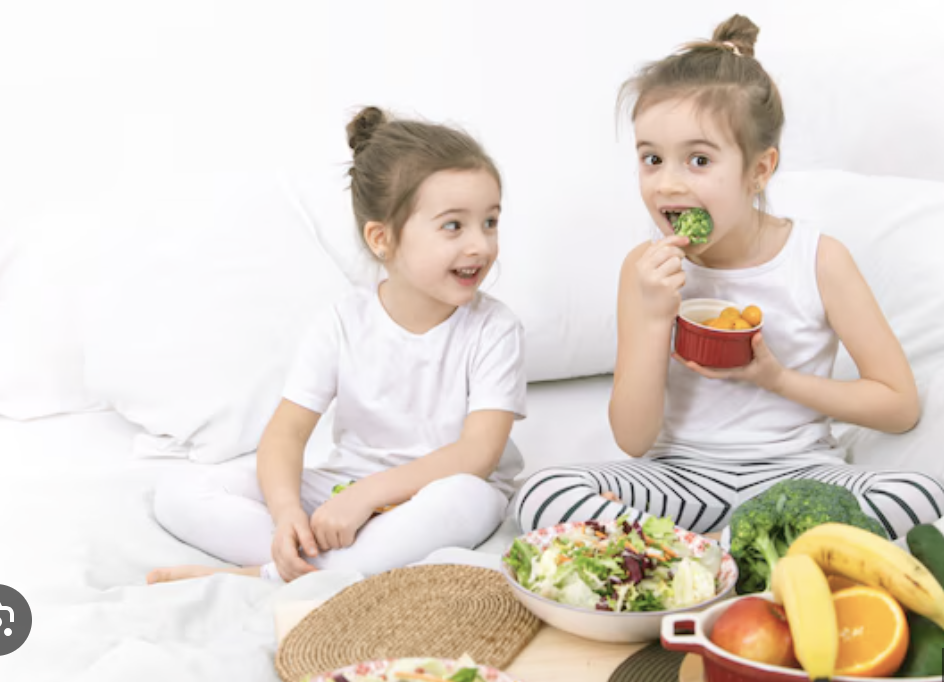Teaching kids about healthy eating at a young age is crucial because it helps them develop lifelong habits that support their overall well-being. Early education on nutrition encourages children to make informed food choices, which can prevent health problems like obesity, heart disease, and diabetes later in life. It also promotes better concentration, energy levels, and growth during their critical developmental years. Additionally, kids who learn about healthy eating tend to have a more positive relationship with food, which can lead to balanced eating habits as they grow older.
Teaching kids about healthy eating can be both fun and engaging with the right activities! Here are some ideas:
- Cooking Together: Get kids involved in preparing meals. Let them wash vegetables, mix ingredients, or choose healthy recipes. It’s a hands-on way to learn about nutrition while developing kitchen skills.
- Gardening: Growing fruits, vegetables, or herbs in a small garden or containers helps kids see where their food comes from. They’ll be excited to eat what they’ve grown!
- Healthy Food Crafts: Use fruits and veggies to make food art. For example, create “fruit faces” or veggie animals that they can eat afterward.
- Food Group Sorting Games: Use pictures of different foods and have kids sort them into categories like fruits, vegetables, proteins, and grains. This teaches them about balanced meals.
- Taste Testing: Offer small samples of various fruits and vegetables. Make it a fun exploration of new flavors and textures, and have kids rate or discuss their favorites.
- Story Time: Read fun books about nutrition, healthy foods, or cooking to make learning about eating well part of their reading routine.
- Interactive Nutrition Apps: There are child-friendly apps and games that focus on teaching healthy eating. These can make learning about food engaging through challenges or puzzles.
- Supermarket Scavenger Hunt: During grocery trips, have kids find items from different food groups or healthy options based on what they’ve learned.
By making learning about nutrition interactive and enjoyable, kids are more likely to retain what they learn and make healthy choices.
When dealing with a child who is a poor eater, it’s important to approach the situation with patience and consistency.
Here are some strategies that may help:
- Offer Variety, But Don't Pressure: Provide a variety of healthy foods at each meal, but avoid pressuring your child to eat. Allow them to explore foods at their own pace.
- Create a Positive Mealtime Environment: Make mealtimes relaxed and enjoyable. Avoid distractions like screens, and try to eat together as a family to model healthy eating habits.
- Establish a Routine: Serve meals and snacks at regular times. A predictable schedule can help your child become more accustomed to eating at specific times.
- Small Portions: Serve small portions to avoid overwhelming your child. You can always offer more if they finish what’s on their plate.
- Make Food Fun: Create meals with colorful, fun shapes or themes. Use cookie cutters for sandwiches or arrange veggies to look like animals or faces to spark interest.
- Involve Them in Meal Prep: Let your child help choose, prepare, or cook meals. Being involved in the process can make them more interested in trying new foods.
- Be a Role Model: Kids often mimic what they see. If they see you enjoying a variety of healthy foods, they are more likely to be curious and try them too.
- Limit Snacks: Avoid too many snacks between meals, as they may reduce your child’s appetite at mealtime. Offer healthy snacks like fruit or yogurt.
- Don’t Reward or Bribe with Food: Avoid using dessert or treats as rewards for eating, as this can create an unhealthy relationship with food.
- Stay Calm: Don’t turn mealtimes into a battle. If your child refuses to eat, stay calm, remove the plate without comment, and try again at the next meal. Consistency is key.
If poor eating persists or affects your child’s growth and health, consult a pediatrician or nutritionist to rule out any underlying issues and get personalized advice. Check out my resource, Fueling Our Bodies: Learning About Healthy Eating. for lesson plans, ideas to teach about food groups and reading nutrition labels and preparing balanced meals.

Here are some children's books that introduce healthy eating in a fun and engaging way:
- "The Very Hungry Caterpillar" by Eric Carle – A classic story where a caterpillar eats through different foods, providing a great starting point to talk about healthy food choices, especially fruits and vegetables.
- "Eat Your Colors" by Amanda Miller – This book introduces kids to the idea of eating a variety of colorful fruits and vegetables, making healthy eating exciting and visually appealing.
- "I Will Never Not Ever Eat a Tomato" by Lauren Child – A humorous story featuring picky eater Lola, who refuses to eat certain foods until her brother helps her see them in a fun and imaginative way.
- "Good Enough to Eat: A Kid's Guide to Food and Nutrition" by Lizzy Rockwell – This book explains the basics of nutrition, food groups, and healthy eating in a simple, kid-friendly way with colorful illustrations.
- "The Berenstain Bears and Too Much Junk Food" by Stan and Jan Berenstain – The Berenstain Bears learn about the effects of eating too much junk food and make changes to their diet to become healthier.
- "Why Should I Eat Well?" by Claire Llewellyn – Part of a series of books teaching life skills, this story helps kids understand why eating healthy is important, with clear examples and fun illustrations.
- "Monsters Don’t Eat Broccoli" by Barbara Jean Hicks – A playful story where monsters insist they don’t eat broccoli but discover they do enjoy healthy foods when presented in fun ways.
- "Gregory, the Terrible Eater" by Mitchell Sharmat – Gregory is a goat who prefers healthy foods over typical goat fare like shoes and junk food, and his parents help him find a balanced diet that everyone can agree on.
These books use engaging characters, colorful illustrations, and fun storytelling to make healthy eating interesting for young children.
Can you name a food in each food group?
Check out my store, Elly Elementary, for all yourr back to school curriculum needs.
Check out the Back to School resource for some fun activities for your first few weeks back.
Join me on Facebook and Instagram. Let me know if you are looking for anything in particular. (Email: ellyelementary@gmail.com)



Comments ()